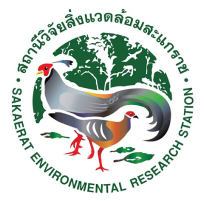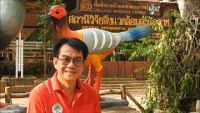Keywords :
Cellulose; Decomposition; Soil
บทคัดย่อ :
Studies on decomposition of cellulosic materials in the form of filter paper and cellophane sheet in the surface soils of the forest at Sakaerat Experiment Station in north-eastern Thailand revealed several groups of cellulose-decomposing fungi. Comparison of the breakdown of the materials within the two major type of forests, namely, the open dry dipterocarp forest and the dense dry-evergreen forest, showed that the rate of decomposition was greater in the dense dry-evergreen forest where the moisture of the soil was higher and the soil was richer in humus material. In general, the period of high degree of decomposition coincided with the period of heavy rainfall and consequently high soil moisture content. Many of the fungi were common in both types of forest while some were concentrated in one or the other type. Aspergillus, Penicillium, Chaetomium , and Trichoderma accounted for almost 50% of the total numbers of isolates from the open dry dipterocarp forest soils. In the dense dry-evergreen forest soils the most abundant group of fungi belonged to genera Gliocladium and Trichoderma 25% of the total isolates while Cylindrocladium, Paecilomyces and accounted for abundance, accounted for another 25%. Aspergillus and Chaetomium and Streptomyces , found in equal were frequently isolated but mostly from the open dry dipterocarp forest soils and probably should be regarded as being significant in that forest type. The same could be stated for Cylindrocladium, Gliomastix , Paecilomyces and Staphylotrichum which were found only in the dense dry-evergreen forest.
เอกสารอ้างอิง :
Sundhagul, M. & Klinsukont, C (1971) Studies on Cellulose decomposition in the soils at Sakaerat Experiment Station. ASRCT.



